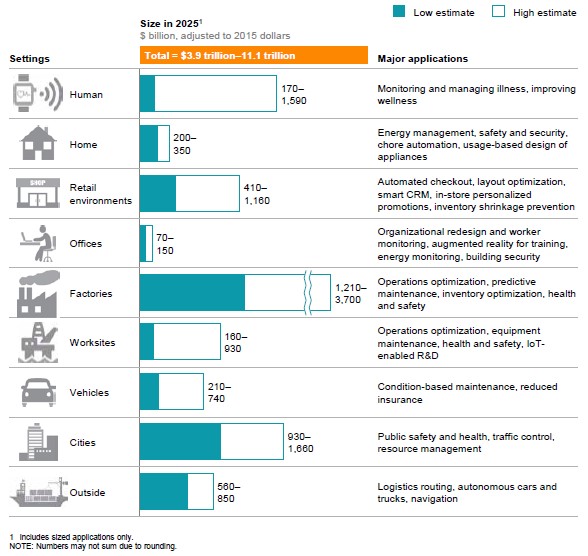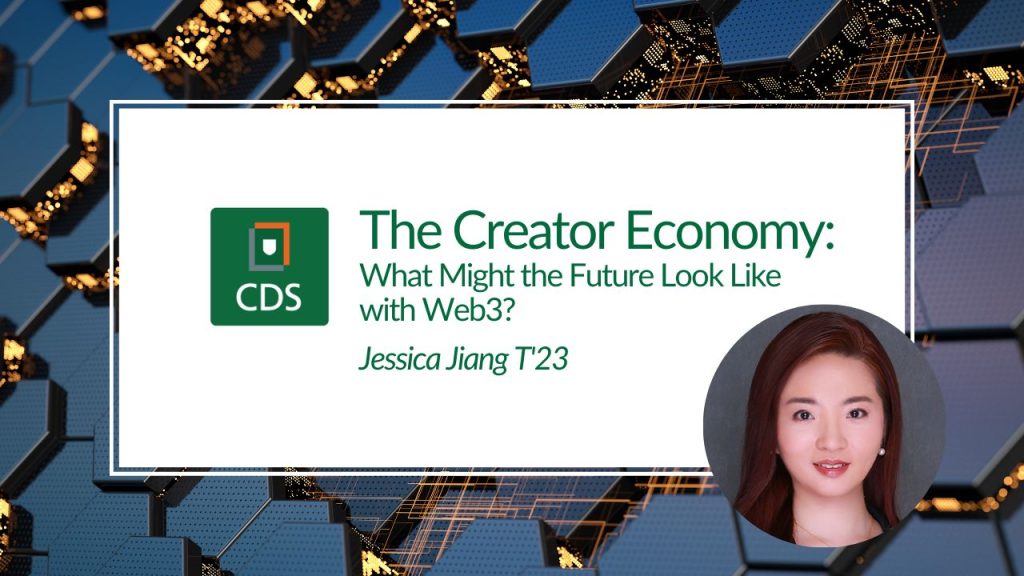IoT: The Internet of Things
August 5th, 2015Topics: Big Data / Analytics Internet of Things

The Internet of Things (IoT) is the network of sensors and actuators embedded in physical objects or things, which can sensor and/or interact with internal and/or external environment. The IoT ecosystem usually include objects, communication, data analytics, and applications. Through these technologies, organizations can monitor the physical world real time and improve decision making dramatically by analyzing data collected from connected devices.
According to McKinsey Global Institute’s recent report (The Internet of Things: Mapping the Value beyond the Hype), the potential economic impact of the Internet of Things is expected to be up to $11.1 trillion per year in 2025. McKinsey estimates that about 62% of the total economic value will come from developed economies over the next ten years because of their higher wage rates and costs and that Business-to-Business (B2B) applications will account for about 70% of the potential value of the IoT.
The report also predicts that the IoT will drive change in competition landscapes and business models significantly. For instance, thanks to the ability to monitor machines at customer sites, industrial equipment manufacturers can shift their business model from selling products to providing equipment as a service.
Potential economic impact of IoT in 2025

(Source: McKinsey Global Institute)
Last year, Gartner also forecasted that 25 billion IoT units will be installed around the world by 2020. The IoT service market will reach $230 billion by 2020, only $65 billion of which will come from consumer applications.
The industrial sector is moving fast to test IoT related technologies because of huge business values: increased productivity and energy efficiency, reduced maintenance and resource costs, improved assets/inventory management and supply chain visibility, etc. For example, using the technologies, some agricultural companies are monitoring crops, pests, and other conditions to automate everyday jobs, maximize crop yields, and conserve resources such as water and energy. Healthcare companies are connecting medical devices to monitor patients to reduce hospitalization and improve efficiency. Utility companies are installing smart meters and smart home devices to monitor and reduce energy, gas, and water consumption.
There are challenges to overcome. For example, the reliability of IoT components can be an issue. These components, such as sensors and actuators, usually are installed in harsh environments but should work for a long time without failure. Data security and privacy are also big concerns. Interoperability among different IoT devices and systems can prevent organizations from reaping the benefits of the IoT.
Chris Rezendes spoke to IoT’s grand challenges here at Tuck.











